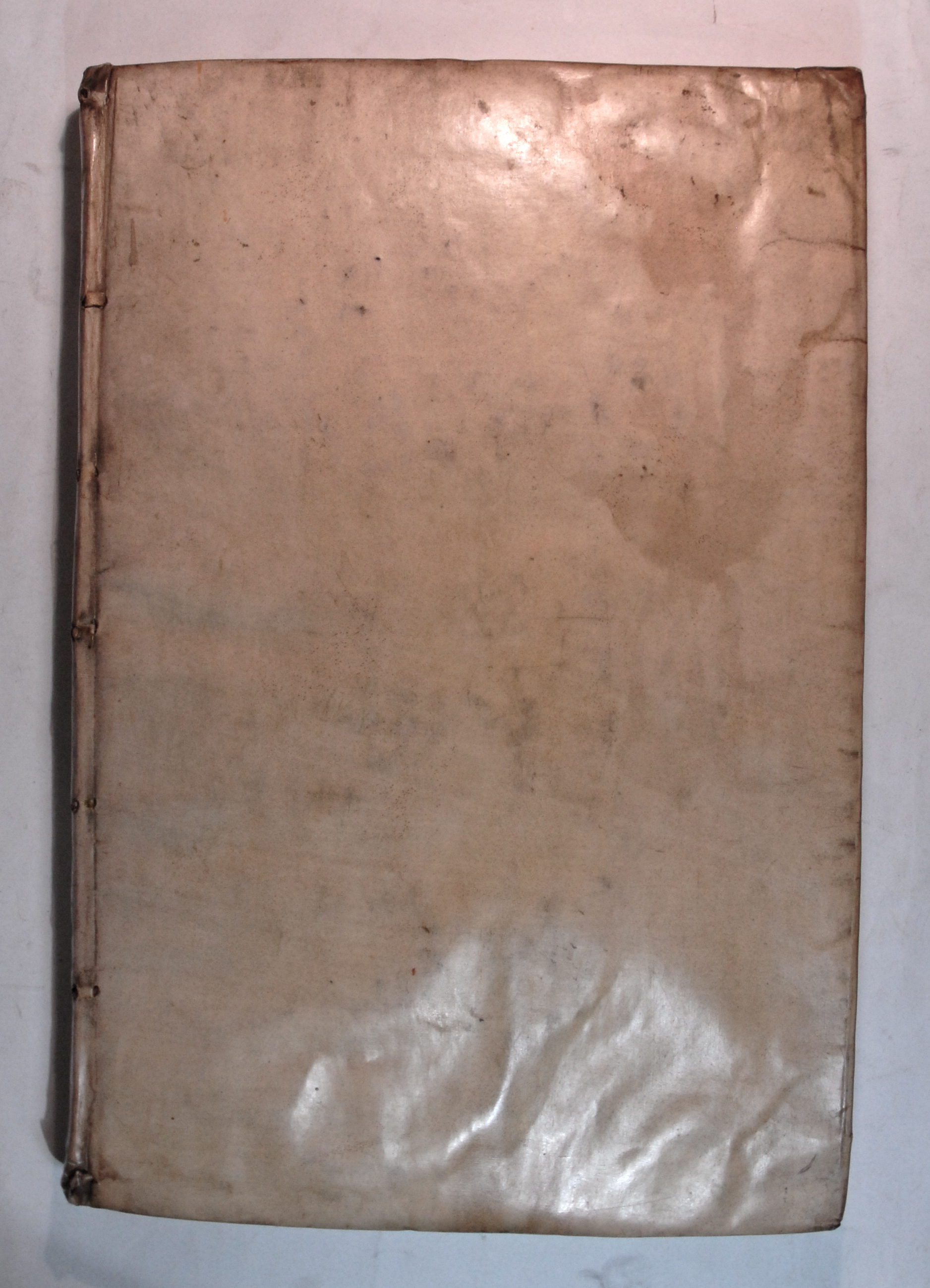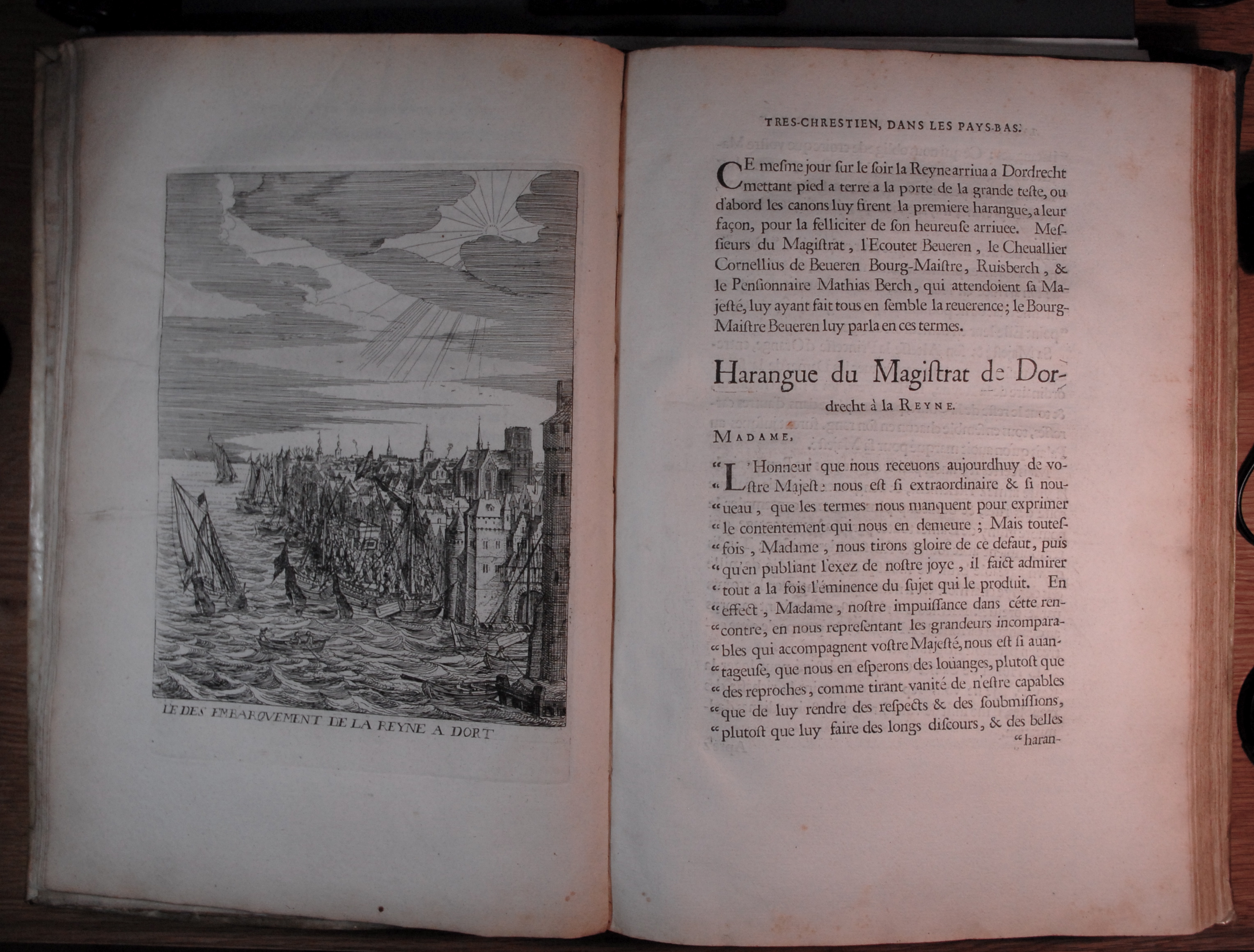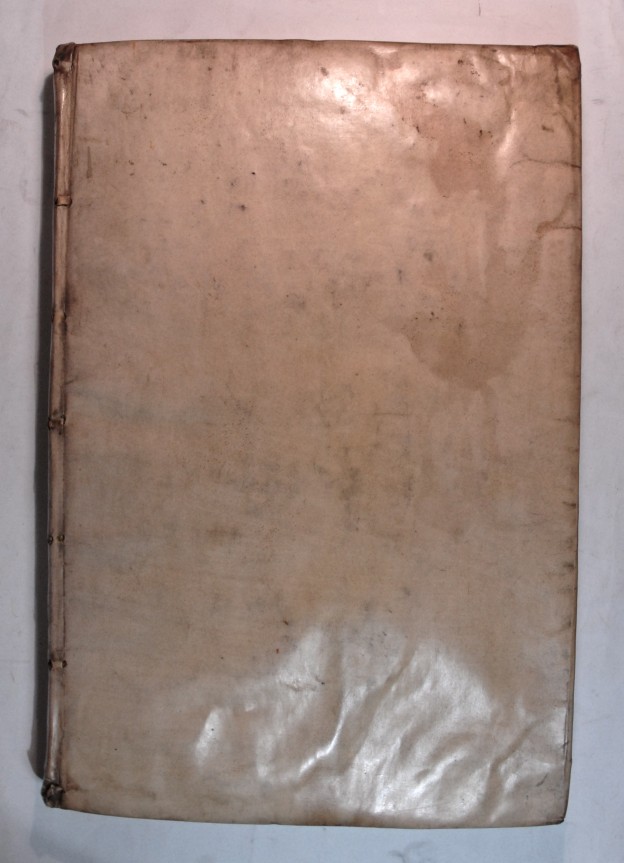PUGET DE LA SERRE, Jean
FINE ASSOCIATION COPY
Histoire de l\\\'Entrée de la Reyne Mere du Roy tres-chrestien, dans les Provinces Unies des Pays-Bas [with] Histoire de l\\\'Entrée de la Reyne Mère du Roy tres-chrestien dans la Grande-Bretagne
London, J. Raworth for G. Thomason and O. Pullen, 1639£13,500.00
FIRST EDITIONS. two vols. in one. Folio. 70 unnumbered ll. (including plates, last blank) + 43 unnumbered ll. (including plates). Roman letter, large floriated initials and headpieces, typographical tailpieces, superb engraved additional title of an angel holding a medallion portrait of Marie de Medici above allegorical figures of death and time, and 14 engraved plates (including one large double folding page), four by W. Hollar. Vol 2 engraved additional title of four allegorical figures surrounding the arms of Marie de Medici, and 13 engraved plates (including one large double folding page), engraved title and three portraits by W. Hollar. André Eugène de Walsh’s autograph C1700 at head of first title, armorial library stamp of the Château de Serrant on both titles, large baroque bookplate of M. di Tramoglia (Henry, Duc de la Tremouille) signed ‘B.P.V.’ on front pastedown, sale notice, Sothebys 1955, penciled above, small label of Paul and Mariane Gourary beneath. First title slightly dusty, light marginal age yellowing, a few pale dampstains at gutter of first few ll of both vols. Fine, large copies, on thick paper, crisp and clean, with excellent strong impressions of the plates, in contemporary polished vellum over boards.
Rare first edition of La Serre’s description of the famous visit of Marie de Medici to the Dutch Republic in 1638, beautifully illustrated with portraits by W. Hollar and with exceptionally fine etched views of the entrée of the French Queen Mother into various Dutch cities, bound with the extremely rare continuation of her voyage to England, also superbly illustrated with portraits and views. Landwehr and Fairfax Murray ascribe all the engravings to Hollar, but Pennington, Parthey and Hind only the frontispieces, the view of the States General and portraits. Hollar lived at the time at London with the Earl of Arundel, enjoyed the patronage of Charles I and was one of the foremost engravers and illustrators of his day.
Marie de Medici, mother of Louis XIII, exiled in 1630, escaped to Brussels in 1631 (after the failure of her attempted coup against her son), where she lived for seven years, supported by a Spanish pension. She continued intriguing against Richelieu and was forced to flee to Holland, greatly to the indignation of Philip of Spain, who at once stopped her allowance. Her visit to Amsterdam was considered a diplomatic triumph by the Dutch, as it lent official recognition to the newly formed Republic; accordingly she was given an elaborate ceremonial royal entry. Spectacular displays, by Claes Cornelisz Moeyaert, and water pageants took place in the city’s harbour. There was a procession led by mounted trumpeters; a large temporary structure erected on an artificial island in the Amstel River was built especially for the festival. The structure was designed to display a series of dramatic tableaux in tribute to her once she set foot on the floating island. She was accompanied by the present author, Puget de La Serre, from Toulouse, librarian of Gaston d’Orléans and prolific author of novels and histories. His description of Marie’s voyage is magnificently illustrated with splendid views of the towns visited and the pageants and ceremonies, including a magnificent double page view of her procession approaching Hertogenbosch where she was met by Prince of Orange. There are further fine etchings showing her disembarking at Gorcum, Dordrecht and at Rotterdam. The whole procession is shown again nearing The Hague, and at Amsterdam a boat-show on the canals is depicted. At Leiden the ‘Entrée’ is shown on a quay alongside a canal, and the last plate, shows the Queen Mother’s dramatic stormy channel-crossing to England.
Following her travels through the Netherlands, she sought refuge in England which was granted by Charles I. Marie had a grand reception and St. James’s Palace was given her as a residence, where she kept a court of her own. However she was mobbed and insulted by the people, even in the palace and forced to leave in 1641. The work is illustrated with superb views of her arrival in Harwich, her entrée in Colchester, the country houses she stayed at through East Anglia, and her entrance to London. The magnificent double page engraving representing Marie’s public entrance into London is particularly interesting; it is one of only two street views extant of the City previous to the great fire. The scene shows the royal cortege in the middle of Cheapside, by the Cheapside Cross, one of the crosses erected by Edward I, to mark the nine resting places of the body of his beloved queen, Eleanor of Castile, on its way from Lincoln to Westminster Abbey. It was destroyed by order of parliament in May 1643. It also depicts the Cheapside Standard, rebuilt in the reign of Henry VI. Stow describes it exactly as represented in this engraving. There are numerous trade signs seen in the illustration; every house had a sign, as shop windows were too small to afford any idea of the trade carried on within. This is followed with scenes of her arrival at St. James Palace, the receptions there, and a view of the Thames, the Tower of London and the firework display that celebrated her arrival. The fine engraved frontispiece and three portraits are among Hollar’s finest productions. A superb copy, extremely rare with both parts, of a most interesting and important work.
Henry de la Tremouille 1599-1674, was a celebrated French general, cousin of Condé and grandson of the prince of Orange, William the Silent, also the grandfather to William III of England. De la Tremouille’s last active service was in Italy – where he received the wound that enforced his retirement. A. Walsh, was from a Jacobite ship owning family, resident in St. Malo after 1685, which provided and manned the vessel which took Prince Charles Edward to Scotland in 1745. The family bought the Chateau de Serrant in 1749 and became Comtes de Serrant in 1755. The château passed back to the Tremouille family in 1830 when Valentine Walsh de Serrant married Charles, Duc de La Tremouille.
STC 20488 + 20489. Landwehr, Splendid Ceremonies 106. Pennington, Descriptive catalogue of the etched work of Hollar (1982), nos. 463, 1687, 2675; Parthey, Wenzel Hollar (1853), nos. 463, 1687, 2675; Hind, Wenzel Hollar (1922), pp. 3, 11.In stock






